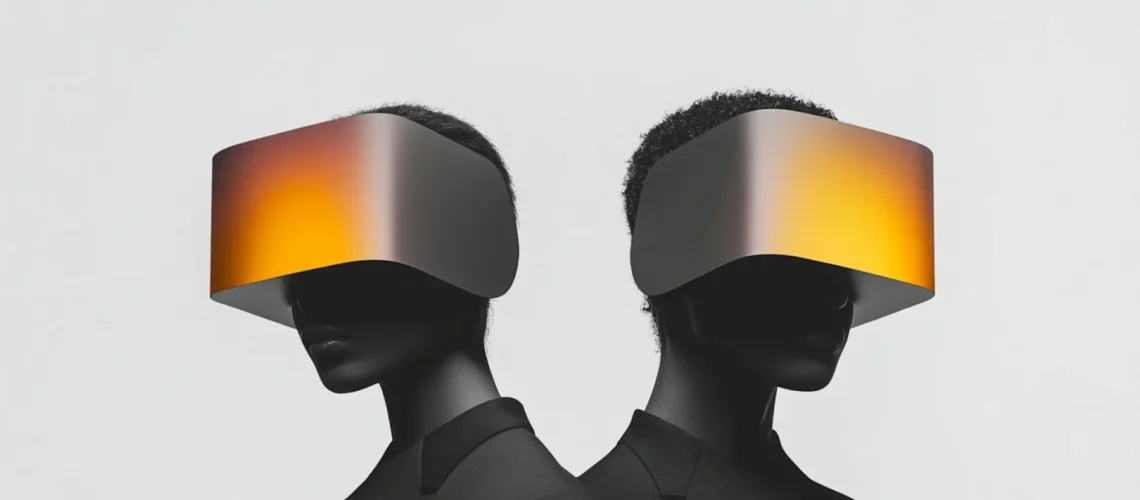The virtual reality market is at a crucial point with two different approaches to mixed reality technology. Meta’s Quest 3S has emerged as a game-changing competitor, offering advanced VR features at an affordable price of $299. This is in sharp contrast to Apple’s Vision Pro, which has a hefty price tag of $3,499.
Price sensitivity plays a crucial role in tech adoption rates. The Quest 3S’s affordability allows mainstream consumers to experience virtual reality without breaking the bank. Apple’s Vision Pro positions itself as a luxury device, targeting professionals and early adopters willing to invest in cutting-edge technology.
These headsets represent two different philosophies in the VR market:
- Meta Quest 3S: Making virtual reality accessible to everyone through affordable innovation
- Apple Vision Pro: Pushing technological limits with high-end features
The significant price difference between these devices—$3,200—raises an interesting question: Can an affordable VR headset provide similar value to its expensive counterpart? The answer can be found by examining their specific features, capabilities, and target audiences.
Meta Quest 3S vs Apple Vision Pro: A Comprehensive Comparison
The Meta Quest 3S and Apple Vision Pro represent two distinct approaches to virtual reality headset design. The Quest 3S prioritizes practicality with its lightweight 514-gram build, making it comfortable for extended gaming sessions. Its design incorporates durable plastic materials and Fresnel lenses, striking a balance between cost-effectiveness and functionality.
Performance
At the heart of the Quest 3S lies the powerful Snapdragon XR2 Gen 2 processor, paired with 8GB RAM. This combination delivers smooth performance for most virtual reality applications and games. The headset’s storage options include:
- 128GB base model
- 256GB expanded storage variant
Under the hood, the Vision Pro houses Apple’s custom-designed chips:
- R1 chip dedicated to processing input from cameras, sensors, and microphones
- M2 chip handling main computing tasks
- 16GB RAM for seamless multitasking
Design and Build Quality
The Apple Vision Pro takes a premium approach with its sophisticated design elements. The headset features a sleek aluminum frame and curved laminated glass display, weighing between 600-650 grams. Apple’s attention to detail shows in the premium materials used throughout the device.
The Vision Pro’s build quality reflects its premium positioning with features like:
- Automatic interpupillary distance adjustment
- Custom-designed head strap system
- Premium cushioning materials
The build quality differences reflect each company’s target market and pricing strategy. Meta focuses on durability and repairability, allowing users to easily replace parts like head straps and facial interfaces. Apple’s Vision Pro emphasizes premium materials and sophisticated engineering, resulting in a more polished but less modifiable design.
Comfort
Both headsets approach comfort differently. The Quest 3S uses a simplified strap design that’s easy to adjust and replace. The Vision Pro implements a more sophisticated dual-loop band system with premium materials for weight distribution.
Display Technology
The display technology marks a significant difference between these devices. Meta’s Quest 3S utilizes Fresnel lenses with an LCD, while Apple opts for a custom micro-OLED technology. This choice impacts both visual quality and the overall form factor of each device.
Audio Quality Comparison
The audio systems in both headsets create distinctly different immersive experiences.
Apple Vision Pro: Advanced Spatial Audio
Apple Vision Pro’s advanced spatial audio system delivers precise, directional sound through a sophisticated array of speakers positioned around the headset. These speakers work in tandem with head tracking to maintain sound positioning as you move, creating a natural auditory environment.
Meta Quest 3S: Built-in Stereo Speakers
Meta Quest 3S takes a simpler approach with built-in stereo speakers. While these speakers provide adequate sound for gaming and general use, they lack the depth and positional accuracy found in the Vision Pro.
The Quest 3S audio system struggles with:
- Bass response in action-heavy content
- Precise spatial positioning
- Sound isolation from external environments
Headphone Support and Audio Processing
Both headsets support third-party headphones through 3.5mm audio jacks. The Vision Pro’s audio processing leverages the R1 chip for real-time sound adjustments, reducing latency and enhancing clarity. Quest 3S relies on the Snapdragon XR2 Gen 2’s audio capabilities, which perform admirably for its price point but can’t match the sophistication of Apple’s custom silicon.
Conclusion: A Tale of Two Audio Experiences
The Vision Pro’s superior audio implementation adds another layer of polish to its premium experience, while the Quest 3S delivers functional audio that serves its core gaming audience.
Gaming vs. Productivity Focus
The Meta Quest 3S shines in gaming applications, powered by its Snapdragon XR2 Gen 2 processor. Its gaming-centric design delivers:
- Responsive controls through hand tracking
- Wide game library compatibility
- Seamless multiplayer experiences
- Fitness-focused applications
Apple Vision Pro, equipped with R1 and M2 chips, prioritizes productivity features:
- Workspace IntegrationMultiple virtual displays
- iOS app compatibility
- Advanced multitasking capabilities
- Professional collaboration tools
The target audience shapes each device’s core functionality. Meta Quest 3S appeals to gamers, fitness enthusiasts, and VR entertainment seekers. Its affordable price point makes immersive gaming accessible to a broader market segment.
Apple Vision Pro targets professionals, content creators, and tech enthusiasts who demand high-end performance. Its sophisticated display technology and productivity tools create a virtual workspace that extends beyond traditional computing limitations.
Gaming Performance Metrics:
- Meta Quest 3S: High refresh rates, low latency
- Vision Pro: Limited game library, focus on video playback quality
These distinct approaches reflect each brand’s market strategy – Meta’s democratization of VR gaming versus Apple’s premium productivity ecosystem.
In terms of the broader implications of such technology on our daily lives and work, it’s interesting to note how these advancements in VR and AR are not just limited to gaming or professional use. They are increasingly being integrated into various sectors including healthcare and education. For instance, the use of VR in healthcare for training or therapy is a growing field that showcases the versatility of these technologies beyond their primary intended use.
Pricing Comparison: Affordable Choice vs Premium Investment
The price difference between Meta Quest 3S and Apple Vision Pro shows how they are positioned in the market. At $299, the Quest 3S is an affordable option for virtual reality technology. This price makes VR experiences accessible to students, casual gamers, and budget-conscious tech enthusiasts.
On the other hand, Apple’s Vision Pro has a high price tag of $3,499 – almost 12 times more expensive than the Quest 3S. This significant investment offers cutting-edge features:
- Micro-OLED technology
- Advanced eye-tracking systems
- Sophisticated hand gesture recognition
- High-end build materials
- Integration with Apple’s ecosystem
While the Quest 3S may not have all the advanced features of the Vision Pro, it still offers great value with:
- Competitive processing power
- Full-color passthrough
- Extensive game library
- Hand and controller tracking
- Social VR capabilities
When deciding between these headsets, your budget and intended use may play a role. The Quest 3S is a capable device for VR gaming and basic virtual reality applications. On the other hand, the Vision Pro aims to be a premium computing platform with advanced features that push technological boundaries – but at a price that reflects its high-end status.
Conclusion: Which Headset is the Best?
The best virtual reality headset for you depends on your specific needs and budget.
The Meta Quest 3S is an excellent choice if you’re looking for an affordable option, especially for gaming and fitness activities. With a price of $299, it’s appealing for both VR fans and casual users.
If you need top-tier performance for professional tasks, the Apple Vision Pro is worth considering. It offers advanced technology for productivity and creative workflows, though its $3,499 price tag targets serious users.
Other noteworthy options include:
Pico Neo 4: Competitive specs at a mid-range price
HP Reverb G2: Exceptional visual clarity for immersive experiences
ByteDance Pico: An emerging player with promising features
As the VR market continues to evolve, businesses and developers can also leverage these devices to build interactive platforms, from immersive training tools to dynamic apps powered by strong web development, intuitive web design, and innovative Mobile Application Development.
When choosing, consider your main purpose (gaming, productivity, or entertainment), your budget, the features you need, and your preferred platform compatibility. Ultimately, the “best” headset is the one that fits your unique requirements — whether it’s the affordable versatility of the Quest 3S, the professional power of the Vision Pro, or a headset designed for customized applications that integrate cutting-edge web design, web development, and mobile solutions.





